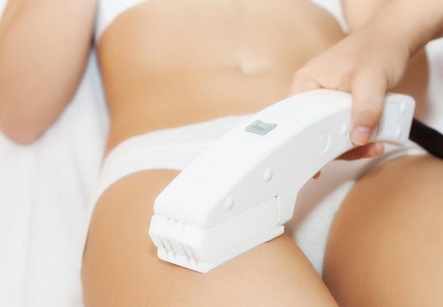CO2 Laser
Introduction
Co2 laser has been used for many years to treat different skin conditions which are not flat including wrinkles, scars, nodules, warts, birthmarks, enlarged oil glands on the nose (rhinophyma).
The new method of CO2 laser skin resurfacing is the use of very short pulsed light energy or continuous light beams. They are delivered very precisely to remove very thin layers of damaged skin with almost no harm to surrounding normal structures. Two weeks recovery time is required after the procedure.
Choice of the surgeon should be done on the basis of documented training and experience in the field of laser therapy.
Before the laser treatment:
A decision whether the patient is suited for laser treatment or not should be taken by consulting with a cosmetologist or plastic surgeon.
1. A proper history, examination and few lab tests are done to determine the general health of the patient.
2. Patient should stop anti-inflammatory drugs like aspirin at least a week or 10 days before the procedure.
3. Medications being taken for other conditions like diabetes, heart disease, blood pressure should be continued with advice from the treating doctor.
We have all the information you need about public and private Cosmetic / Plastic clinics that provide Fractional CO2 Laser in Iran, Islamic Republic Of

4. History of smoking or alcohol drinking should be told to the surgeon. Smoking should be stopped if possible as it interferes with the wound healing.
5. Recent history of cough, cold, fever, viral infections, or other illnesses should be informed to the surgeon. They can be treated before the procedure.
6. Other factors that should be discussed with the doctor are skin type, ethnic background, and age, as well as the skin problems to be corrected and expectations from surgery.
7. If the patient has a tendency to develop cold sores or fever blisters, it must be informed. These conditions can be precipitated by laser therapy.
Mechanism of action:
The intense beam of CO2 laser vaporizes the molecules in and around the skin cells, so that the skin cells are destroyed by heat damage. It also stimulates the production of collagen in the damaged tissues.
Procedure:
1. A written informed consent is taken from the patient before the procedure. Laser treatment is an outpatient procedure. Patient is given local anesthesia and intravenous sedation.
2. The doctor and patient both need to wear protective eye gear to prevent damage to the eyes by laser.
3. The treatment area is cleaned and surrounding normal skin or hairs are covered with wet gauze.
4. The doctor guides the laser beam with the help of a small hand piece and sweeps the laser over the affected area to remove the top layer of the skin.
5. This process is repeated several times in various angles and wiped at each time with wet gauze. This procedure creates a lot of smoke as there is vaporization of tissues. A suction machine is used to remove the smoke from the procedure field. Special masks are worn to prevent inhalation of smoke.
6. The process takes a few seconds to even an hour depending on the size of the lesion and condition being treated.
After Laser Resurfacing:
1. Following laser resurfacing, a sterile dressing is applied to the areas of treatment. Vaseline dressing is applied if the face is treated. After one to three days, the dressing is removed.
2. The treated areas should be washed at least two to five times a day with cool tap water.
3. Vaseline like ointment should be applied on the treated area. This wound care is intended to prevent scab formation.
4. Usually the areas heal in 10-21 days depending on the size of lesion and condition that was treated.
5. The areas look pink or red after the laser treatment. It can be made light by applying makeup. The pink color takes about six months to a year to disappear completely.
6. A sunblock should be used throughout the process of treatment. Otherwise burning, blistering or scarring can occur.
Benefits and risks:
The CO2 laser treatment causes less scarring than the conventional surgical methods. Also it is a quick procedure on outpatient basis.
However, there are some risks like-
1. CO2 laser treatment is painful. It is always done under local anesthesia. In children, general anesthesia is needed.
2. A scab or crust forms on the lesion. This scab should not be picked as it may cause permanent scarring.
3. The treated area is very prone to sunburn for about 6 months.
4. Pigmentation changes like darkening or lightening can occur.
5. Damage to eyes if the laser beam falls directly on the eye.